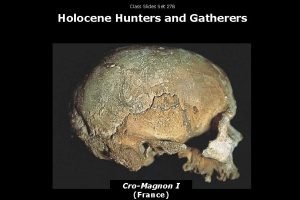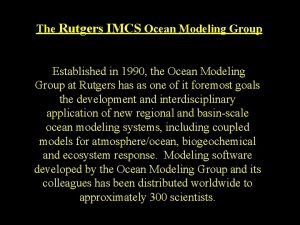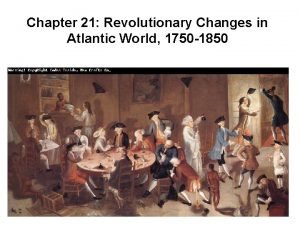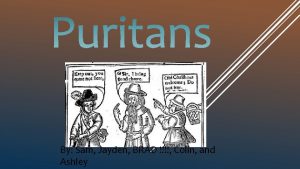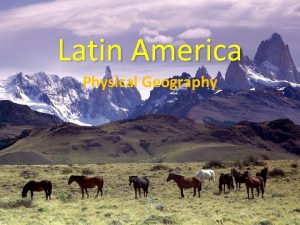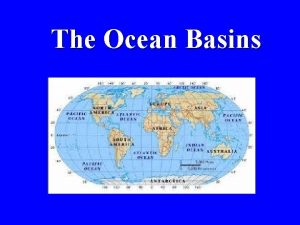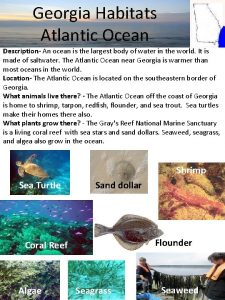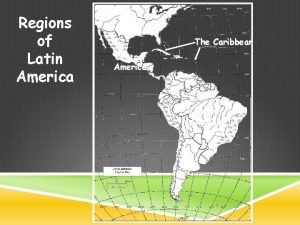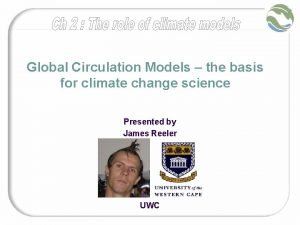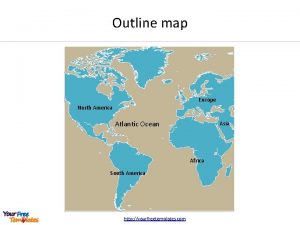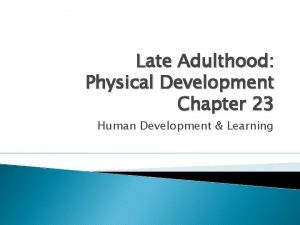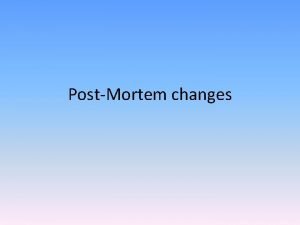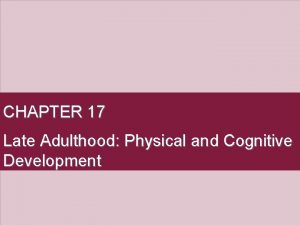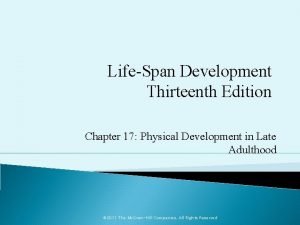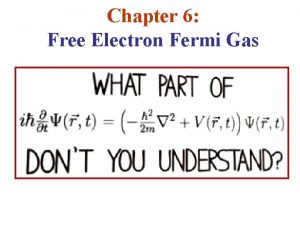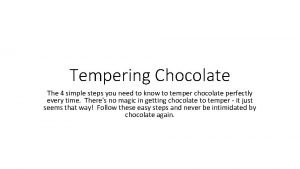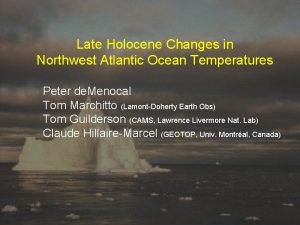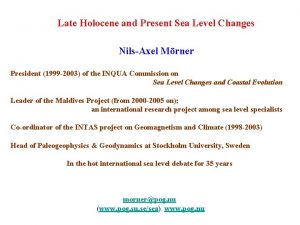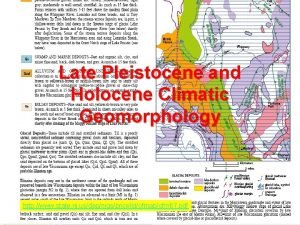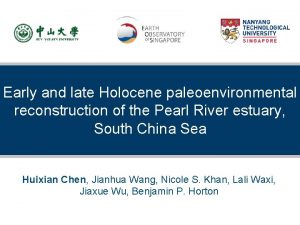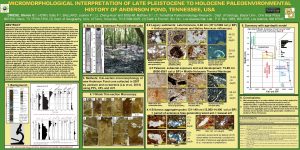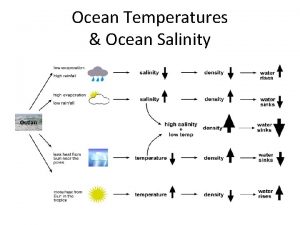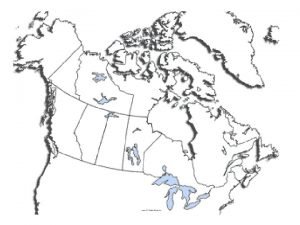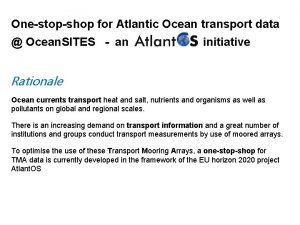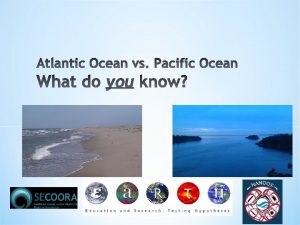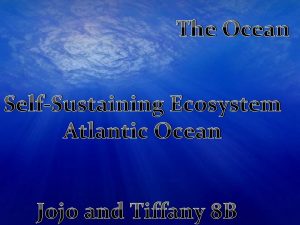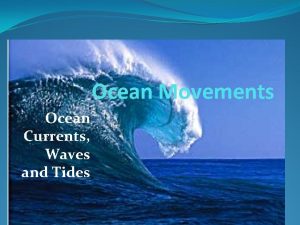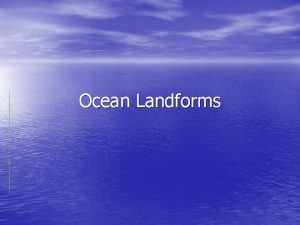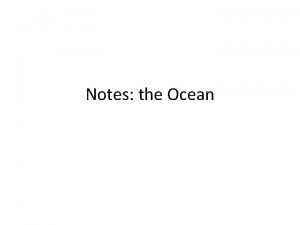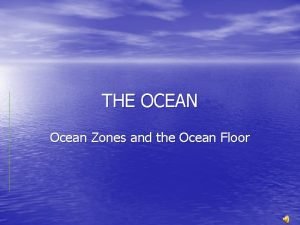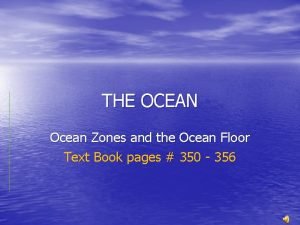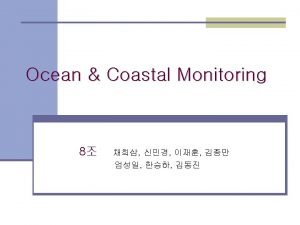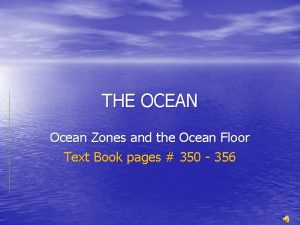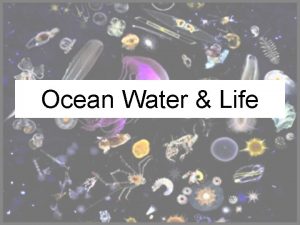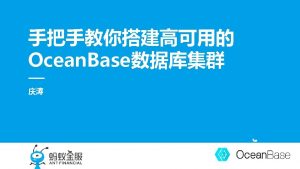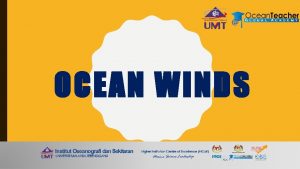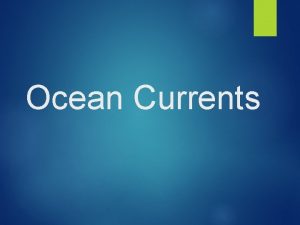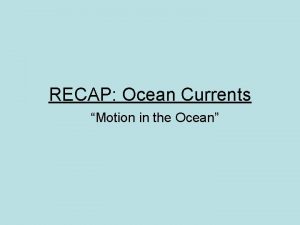Late Holocene Changes in Northwest Atlantic Ocean Temperatures































- Slides: 31

Late Holocene Changes in Northwest Atlantic Ocean Temperatures Peter de. Menocal Tom Marchitto (Lamont-Doherty Earth Obs) Tom Guilderson (CAMS, Lawrence Livermore Nat. Lab) Claude Hillaire-Marcel (GEOTOP, Univ. Montréal, Canada)

Holocene 1 -2 kyr ice rafting cycles (Bond et al. , 2001)

N. Atlantic Holocene climate records Surface cooling was widespread. . . synchronous everywhere?

The Plan. . . • Measure Mg/Ca and d 18 O composition of N. pachyderma (right) to monitor Late Holocene changes in NW Atlantic SSTs: – Core situated near the subpolar gyre - N. Atlantic Drift boundary – Is N. pachy (right) a faithful, surface-dwelling species? – How well does NPR Mg/Ca composition track SSTs? – How large were past SST changes in this region? – How do these changes compare with lithic indices? – Implications & conclusions

Orphan Knoll: MC 23, GGC 024

Labrador Sea Bloom: May-June Nova Scotia Newfoundland

Orphan Knoll: Hydrographic Setting

Labrador Sea Water • LSW spans 600 -2000 m; T ~3. 2°C, S ~34. 85 psu • LSW historically very sensitive to surface climate changes. – Responds to NAO forcing of surface climate and fluxes – During high NAO state: • Cooling of Lab. Sea SSTs • LSW formed is cooler, fresher, and thicker. • Very rapid response (LSW “vintages”); Sy et al. , 1997. • Upper NADW (LSW) ventilation ~4 Sv.

LSW Shutdown (1968 -1973) GSA (Lazier, 1980)

Reconstruct Holocene changes in upper NADW • Multicore (10 MC) and Gravity core (09 GGC) taken in 1998. • Sedimented spur on Laurentian Slope. • 1850 m water depth. • Within the modern core of LSW (upper NADW). • ~16 cm/kyr sed. rate. 10 MC 09 GGC

Foraminiferal Mg/Ca vs. temperature data from Lear et al. (2002) C. pachyderma

Foraminiferal d 18 O as a temperature/salinity proxy calcite d 18 O decreases with temperature seawater d 18 O increases with salinity Lynch-Stieglitz et al. (1999) Mg/Ca + d 18 Oforam => f(T, d 18 Osw, S) Mg/Ca = f(T) d 18 Oforam = f(d 18 Osw, T) d 18 Osw = f(S)

Laurentian Slope core 10 MC/09 GGC Mg/Ca and d 18 O data (1854 m)

10 MC/09 GGC results vs. time LSW cold during IRD events LSW cold during glacial advances

Estimating “paleo-LSW” properties

Late Holocene “paleo-LSW” properties LSW instrumental (Yashayaev et al. , in press) LSW past 4000 yr • much greater T: S variability than instrumental record • reduced density during cold, fresh periods

Part 2: Labrador SSTs during the late Holocene • Two cores from the Labrador Sea: • Orphan Knoll - Multicore (23 MC) and Gravity core (24 GGC) taken in 1998. • S. Greenland - Box core 90 -013 -017 taken by C. Hillaire-Marcel (Univ. Quebec). 90 -013 -017 23 MC 24 GGC

Mg/Ca and modern Labrador SSTs • Southern Labrador Sea core site (23 MC) • Mg/Ca on N. pachyderma (right) • Coretop Mg/Ca value indicates “modern SST” of 6. 6± 0. 7°C • Consistent with sediment trap evidence for late spring bloom.

Labrador SSTs WARM during “cool events”!

Summary of results

Part 3: Implications • Cooling and freshening of upper NADW during late Holocene “cool events”. – Changes were many times larger than historical. – During cool events, LSW (upper NADW) may have formed elsewhere because. . . • Labrador Sea was warm during the LIA and latest Holocene “cool events”. – Supports initial findings by Keigwin and Pickart (1999). – Suggests that the Holocene events may have a “NAO-like” signature - regionally assymetric.

Pacemaker of Holocene climate variability appears to have been solar luminosity. . . Bond et al. , 2001

Solar Variability: Century-scale “pulsing” of Solar luminosity Only ~0. 25% variability of incoming radiation (visible)

Regional climate responses to solar variability • Shindell et al. (2001) simulated climate during the Maunder Minimum (1680’s) using a GCM with full stratosphere representation. • Reduced irradiance during the Maunder minimum led to strat. ozone redistributions which amplified the cooling (global cooling of -0. 4°C). • Modeled surface temperature changes resembled a negative NAO pattern, with cooling over northern Eurasia and warming over the Labrador Sea region.

Modeled surface temperature changes during the Maunder Minimum (ca. 1680 AD) Persistent negative NAO pattern Annual Temperature change (°C; Shindell et al. , 2002)

Longest European climate records also suggest “persistent negative NAO” during the LIA (Luterbacher et al. , 2002)

Negative NAO climate signatures during the LIA? • Northern Eurasia, N. Atlantic cool? YES • Labrador Sea warms? YES • Reduced Labrador Sea Water formation? – Perhaps. LSW may have shoaled above core depth • Cooler tropical ocean SSTs? (Hoerling et al. , 2001) – Perhaps. Cooler and drier western tropical Atlantic during LIA (Black et al. , 1999; Haug et al. , 2001; de. Menocal et al. , 2000).

Labrador Sea Water at 1800 m (Pot. Vorticity minimum) MC 10 GGC 09 (from R. Curry, WHOI)

Labrador Sea Water convection (TTO & WOCE data) shallow convection deep convection

Solar Variability and Climate • Long history of proposed linkages (Blanford, 1891!) • Cosmogenic isotopes: 10 Be, 14 C • Contains decadal- to millennial-scale variability • 0. 25% solar constant variation = 0. 50°C ∆T. From Stuiver et al. (1998)

Labrador Sea Water at 1800 m (Pot. Vorticity minimum) (from R. Curry, WHOI)
 Hunters slides
Hunters slides Rutgers water temp
Rutgers water temp Chapter 21 revolutionary changes in the atlantic world
Chapter 21 revolutionary changes in the atlantic world Why did the puritans cross the atlantic ocean
Why did the puritans cross the atlantic ocean Where is the equator in south america
Where is the equator in south america Puerto rico trench
Puerto rico trench Apple turtle field earth squirrel azalea world
Apple turtle field earth squirrel azalea world What is another arm of the atlantic ocean cradled by mexico
What is another arm of the atlantic ocean cradled by mexico The atlantic ocean gets about 3-5 ______ wider each year.
The atlantic ocean gets about 3-5 ______ wider each year. Amazonia azul
Amazonia azul Slowing atlantic ocean circulation
Slowing atlantic ocean circulation Atlantic ocean outline
Atlantic ocean outline What is another arm of the atlantic ocean cradled by mexico
What is another arm of the atlantic ocean cradled by mexico Later adulthood physical development
Later adulthood physical development Cadaveric spasm and rigor mortis difference
Cadaveric spasm and rigor mortis difference Changes in late adulthood
Changes in late adulthood Forms of development
Forms of development Late postmortem changes
Late postmortem changes Physical development in late adulthood
Physical development in late adulthood Elizabeth mulroney
Elizabeth mulroney Physical change definition
Physical change definition Ocean ocean convergent boundary
Ocean ocean convergent boundary Convergent boundary
Convergent boundary Convergent plate boundaries
Convergent plate boundaries Convergent oceanic oceanic plate boundary
Convergent oceanic oceanic plate boundary Ocean ocean convergent boundary
Ocean ocean convergent boundary Red ocean blue ocean strategi
Red ocean blue ocean strategi Convergent vs divergent plate boundaries
Convergent vs divergent plate boundaries Chapter 15 ocean water and ocean life wordwise answer key
Chapter 15 ocean water and ocean life wordwise answer key Fermi-dirac distribution function at different temperatures
Fermi-dirac distribution function at different temperatures Servsafe 3 compartment sink temperatures
Servsafe 3 compartment sink temperatures Tempering chocolate temperatures chart celsius
Tempering chocolate temperatures chart celsius
